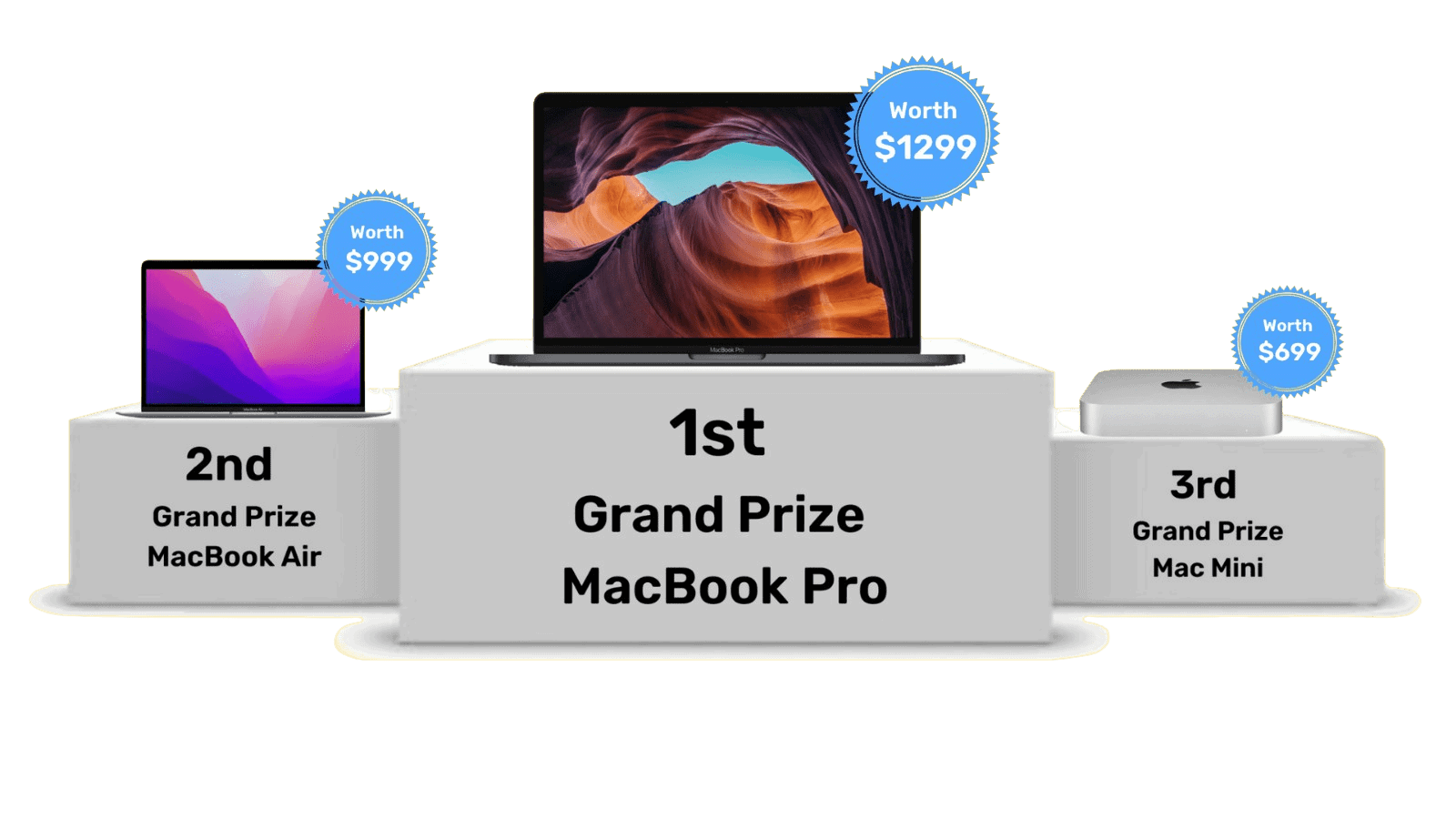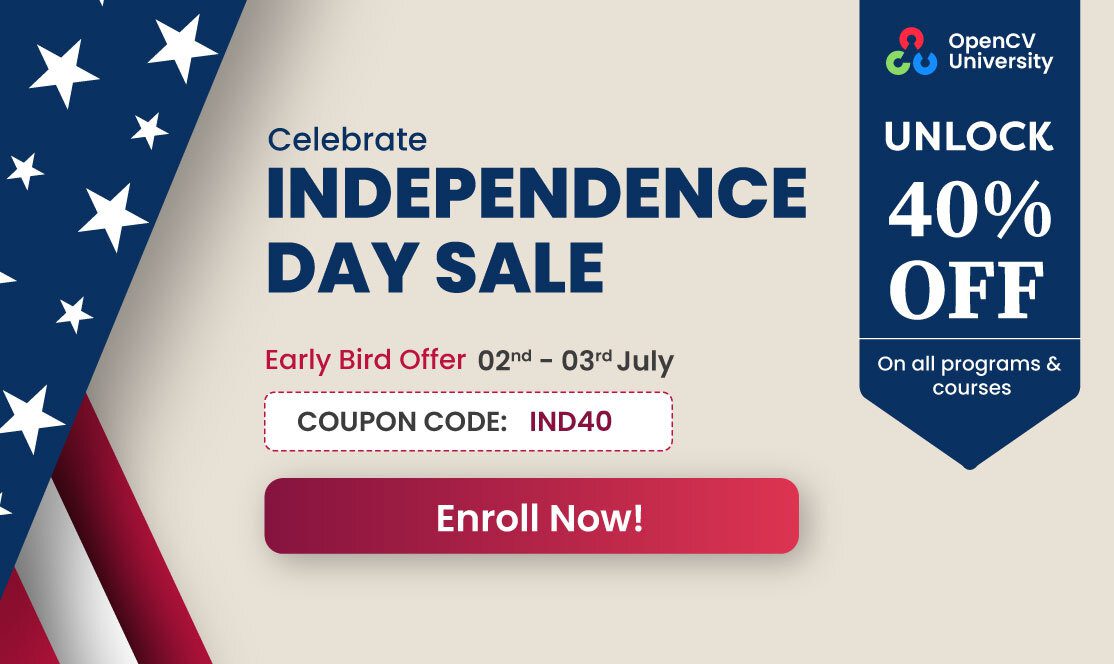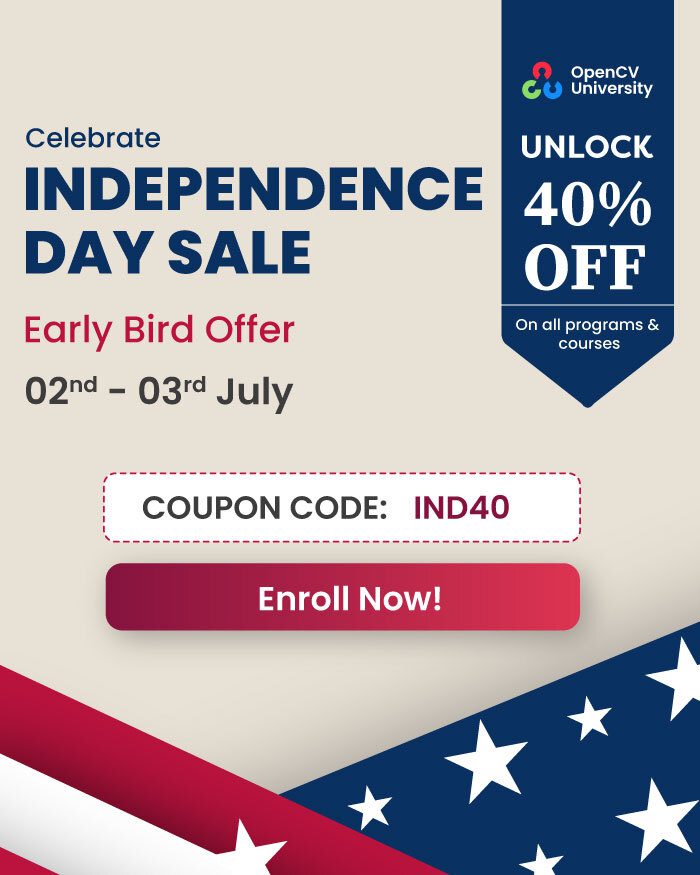
- 26th Oct - 6th Dec
LearnOpenCV Blog Olympics
No, it’s not in Tokyo. But online.
Grand Prize Winners
#2 Floris Alexandrou

Fighting Climate Change Using
Computer Vision
#1 Anton Moscowsky

Multiattribute and Graph-based Object Detection
#3 Enrique Dehaerne

Ensemble Deep Learning-based Defect Classification and Detection in SEM Images
Other Finalists

Name
Blogpost Title
Nguyen Viet Anh
Build your own self-driving car from scratch
Dmitrii Matveichev
Multiple Object Tracker with YOLOX and ByteTrack
Nabiev Vitaliy
How to create automation farm bot and auto resource accounting
Cliff Tsai
The OpenCV Software and Hardware Co-Design Example
Massimiliano Porzio
Artificial Intelligence for Healthcare
Mourad Hassani
Weather Classification using Transfer Learning
Muhammad Qasim Khan
Identity Concealment using StyleGAN and SimSwap
Jesus Gonzalez
MLOps for students using MLflow
Aanisha Bhattacharyya
De-noising images using Autoencoders
Brad Davis
Teach Your Computer To See
Prizes

- Top 3 entries will win a Grand Prize in the form of a Macbook Pro or Macbook Air or Mac mini.
- The next 10 Finalists will receive a cash Prize of $200.
- ALL Top 13 entries will get an official OpenCV course of their choice for FREE.
- ALL Top 13 entries will receive a Certificate of Achievement.
- ALL Top 13 blogposts will be featured in LearnOpenCV.com.
- ALL valid submissions will receive a Certificate of Participation and a 50% discount on an official OpenCV course of their choice.

Accordion Content
We respect people’s freedom of choice!
Regardless of the reasons behind your preference, we will award you a cash prize of a value equivalent to the product value in the US Apple store.
Here is how the cash will be awarded if you prefer the cash prize as a Grand Prize winner.
| Prize | Cash Value |
| 1st Grand Prize Macbook Pro Apple M1 Chip with 8‑Core CPU and 8‑Core GPU 256GB Storage | $1299 |
| 2nd Grand Prize Macbook Air with Apple M1 Chip with 8-Core CPU and 7-Core GPU 256GB Storage | $999 |
| 3rd Grand Prize Mac mini with Apple M1 Chip with 8-Core CPU and 8-Core GPU 256GB Storage | $699 |
Topic Suggestions
We have divided suggested topics into three broad categories as outlined below. You can write on any of the suggested topics or any other relevant topic of your choice. If you are choosing a different topic beyond the suggested topics, please let us know by emailing us at support@LearnOpenCV.com before you make a start.
- Image Classification
- Object Detection
- Semantic/Instance Segmentation
- Pose Estimation
- Generative Adversarial Networks ( GANs )
- Improving DL Pipeline
- Deployment Strategies on cloud
- Model Optimization
- System Setup guides
- ML Ops
- Any other Computer Vision problem of your choice
- Real world applications with OpenCV/PyTorch/Tensorflow
- Creating CV Mobile apps with TensorFlow lite
- Applications using edge devices

More Information
- Word Limit: Minimum 1200 words (excluding code).
- Use Images, Videos, Diagrams, Charts, Tables & Code snippets to illustrate your points.
- All write-up / images / video / code should be your own. Add source for every external media used and give due credits and references. Any form of plagiarism will result in rejection of your submission.
- Ensure the blogpost is grammatically correct with no spelling errors. You may consider using tools such as Grammarly for help.
- Cite references with links where you have drawn inputs and inspiration to create your blogpost.
We have outlined the suggested topics as a guidance for you to create your blogpost. You will need to perform all experiments and submit the following:
- Code with complete instructions about running the code. We suggest using Google Colab if your code doesn’t have any GUI components. The code should run out of the box without any changes or intervention.
- Complete write-up.We would prefer a Google Doc for your write-up. However, you can use any other way to submit your write-up as well.
- Demo video showing the running of your code with output.
- Provide a summary in 100-150 words along with a feature visual (image/GIF) that goes along with the blogpost.
Our judging panel of experts shall evaluate your submission based on the following indicative parameters:
- Originality – There should be No Plagiarism in your content (words, visuals, charts or code snippets).
- Clarity – Provide detailed, structured & technically-sound write-up. Every concept, tool & method should be explained simply, step-by-step, with visual aids.
- Depth – We’ll focus on the Quality of Analysis, Level of Understanding & Depth of Research.
- Impact – The relevance and purpose of the idea / tool / solution.
- Target Audience – The potential reach of the blogpost and its relevance for beginners, intermediate or advanced users.
| 26th Oct | Registration & Submission Starts |
| 6th Dec | Submission Closes |
| 7th Jan | Announcement of Results |






